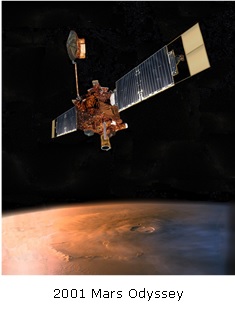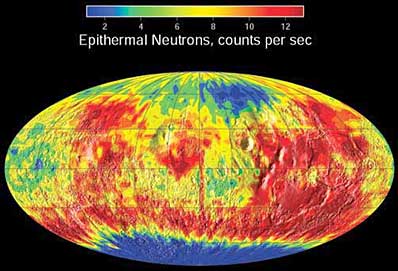About 200 days after launch, at 02:38 UT Oct. 24, 2001, Mars Odyssey successfully entered orbit around Mars after a 20-minute, 19-second engine burn. The initial orbit was highly elliptical at about 170 × 16,665 miles (272 × 26,818 kilometers). Docker osx download. It would take the spacecraft 18.6 hours to complete one circuit. About 200 days after launch, at 02:38 UT Oct. 24, 2001, Mars Odyssey successfully entered orbit around Mars after a 20-minute, 19-second engine burn. The initial orbit was highly elliptical at about 170 × 16,665 miles (272 × 26,818 kilometers). It would take the spacecraft 18.6 hours to complete one circuit.
The 2001 Mars Odyssey, formerly MGM (Mars Global Mapper), is the remaining part of the Mars Surveyor 2001 Project, which originally consisted of two separately launched missions, The Mars Surveyor 2001 Orbiter and the Mars Surveyor 2001 Lander. The lander spacecraft was cancelled as part of the reorganization of the Mars Exploration Program at NASA. The orbiter, renamed the 2001 Mars Odyssey, will nominally orbit Mars for three years, with the objective of conducting a detailed mineralogical analysis of the planet's surface from orbit and measuring the radiation environment. The mission has as its primary science goals to gather data to help determine whether the environment on Mars was ever conducive to life, to characterize the climate and geology of Mars, and to study potential radiation hazards to possible future astronaut missions. The orbiter will also act as a communications relay for future missions to Mars over a period of five years.
The 2001 Mars Odyssey launched on 7 April 2001 at 15:02:22 UT (11:02:22 a.m. Adobe illustrator torrent mac reddit. EDT). During the cruise to Mars, in August, the MARIE instrument failed to respond during a routine data transfer and was put into hibernation. Attempts to revive the instrument were successful in March 2002 and MARIE began taking scientific data from orbit on 13 March. The star tracker camera is having difficulties with too much stray light, it is thought that this will not affect its operation severely. After a seven month cruise the spacecraft reached Mars on 24 October 2001 at 02:26 UT (23 October 10:26 p.m. EDT). The spacecraft used a 19.7 minute main-engine propulsive maneuver to transfer into an 18.6 hour elliptical capture orbit and used aerobraking until 11 January 2002, when the spacecraft pulled out of the aerobraking orbit into a 201 × 500 km orbit. This orbit was trimmed over the next few weeks until it became a 2-hour, approximately 400 × 400 km polar science orbit on 30 January 2002. The Orbiter will act as a communications relay for the Mars 2003 Rovers, scheduled to arrive in January 2004, and possibly other future missions. Data will be collected from orbit until the end of the 917 day nominal mission in July 2004. The spacecraft will continue to act as a communications relay until October 2005.


2001 Mars Odyssey Mission Summary
The 2001 Mars Odyssey carries
- the Mars Radiation Environment Experiment (MARIE), which will measure the near-space radiation environment as related to the radiation-related risk to human explorers,
- the Thermal Emission Imaging System (THEMIS), which will map the mineralogy of the Martian surface using a high-resolution camera and a thermal infrared imaging spectrometer,
- the Gamma-Ray Spectrometer (GRS), which will map the elemental composition of the surface and determine the abundance of hydrogen in the shallow subsurface.
- star cameras.

Odyssey 2 Spacecraft
The main body of the 2001 Mars Odyssey is box-shaped, 2.2 meters × 1.7 meters × 2.6 meters. The spacecraft has a launch mass of 725.0 kg, including 348.7 kg of fuel. The orbiter is divided into two modules, the upper equipment module holds the equipment deck which supports the engineering components and the science instruments. Above the equipment module, connected by struts, is the science deck, holding the star cameras, high energy neutron detector, UHF antenna, the THEMIS instrument and a deployable 6 meter boom holding the gamma sensor head for the GRS. A set of solar array panels extends out from one side of the main bus. A parabolic high-gain dish antenna is mounted on a mast extending from one corner of the bottom of the bus. The MARIE instrument is mounted inside the spacecraft. The lower part of the bus is the propulsion module. The main engine, a hydrazine and nitrogen tetroxide rocket which can produce 65.3 kg thrust, is mounted in the bottom part of the propulsion module, along with the fuel, oxidizer and helium pressurization tanks.
Attitude control is provided by four 0.1 kg thrusters and the spacecraft can be turned using four 2.3 kg thrusters. The spacecraft is three-axis stabilized using three primary reaction wheels and one backup. Navigation is provided by a Sun sensor, star camera, and inertial measurement unit. Power is provided by the gallium arsenide solar cells in the solar panel and a 16 amp-hr nickel hydrogen battery. Communications between the orbiter and Earth are in X-band via the high-gain antenna and communications between the orbiter and any Mars landers are via the UHF antenna. Thermal control is achieved using a system of heaters, radiators, louvers, insulating blankets and thermal paint. Command and data handling is through a RAD6000 computer with 128 Mbytes RAM and 3 Mbytes of non-volatile memory. [NASA]


2001 Mars Odyssey was called the spacecraft that orbits Mars. Lockheed Martin was contracted by NASA for this project with a cost of 297 million USD for the whole mission. The spacecraft is supposed to look for evidence of volcanic activity and water from past or present, by using electronic imagers and spectrometers. The mission’s purpose is to find possible evidence to prove the existence or non existence of life on Mars. The name of the mission is inspired by the famous movie by Stanley Kubrick: 2001: A Space Odyssey.
Nasa Odyssey
Odyssey spacecraft was launched in April 2001 from Cape Canaveral and six months later it reached the orbit of planet Mars. For the spacecraft to enter the Martian orbit, it had to have its main engine fired so that the speed could be broke. The technique that it was used is called “aerobraking†and it brings the spacecraft closer to the Planet orbit by orbit, gradually. The mapping mission of Odyssey started in February 2002.
